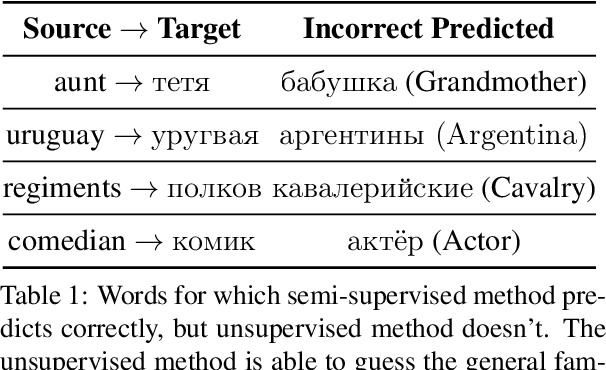Bilingual Lexicon Induction with Semi-supervision in Non-Isometric Embedding Spaces
Paper and Code
Aug 19, 2019



Recent work on bilingual lexicon induction (BLI) has frequently depended either on aligned bilingual lexicons or on distribution matching, often with an assumption about the isometry of the two spaces. We propose a technique to quantitatively estimate this assumption of the isometry between two embedding spaces and empirically show that this assumption weakens as the languages in question become increasingly etymologically distant. We then propose Bilingual Lexicon Induction with Semi-Supervision (BLISS) --- a semi-supervised approach that relaxes the isometric assumption while leveraging both limited aligned bilingual lexicons and a larger set of unaligned word embeddings, as well as a novel hubness filtering technique. Our proposed method obtains state of the art results on 15 of 18 language pairs on the MUSE dataset, and does particularly well when the embedding spaces don't appear to be isometric. In addition, we also show that adding supervision stabilizes the learning procedure, and is effective even with minimal supervision.
 Add to Chrome
Add to Chrome Add to Firefox
Add to Firefox Add to Edge
Add to Edge